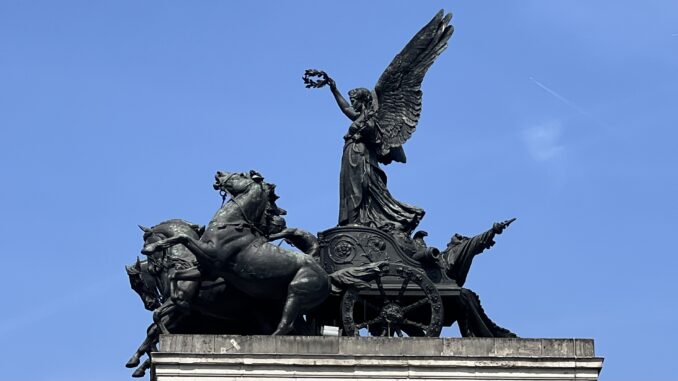
As well as Marble Arch to the north, Park Lane has at its opposite end what is now called the Wellington Arch.
This is just one of the clutch of memorials to Arthur Wellesley, the first Duke that sit around his London home of Apsley House (“No. 1 London”) and – like Marble Arch – was conceived to celebrate British victories over Napoleon and the French, echoing the triumphal arches of the Romans (and, by extension, France’s own Arc de Triomphe).
And also like Marble Arch this too has been moved over the 200 years since it was constructed. Designed by Decimus Burton it originally faced, and was parallel to, Burton’s ‘screen’ that was the ceremonial entrance into Hyde Park. The concept was that visitors to George IV’s new Buckingham Palace would come through the park and the screen, through the arch, down Constitution Hill and then through Marble Arch into the palace courtyard. George, our most extravagant monarch (certainly of modern times), never missed an opportunity to build to impress.
However, the huge overspend on Nash’s designs for Buckingham Palace and other of George’s grand projets saw the arch’s original planned decoration reduced, and the intended sculpture that was to crown in – a quadriga, or four-horse chariot – was not made. The arch became known as the ‘Green Park’ or ‘Constitution Hill’ arch, more of a gateway into a space than a grand ceremonial entrance.
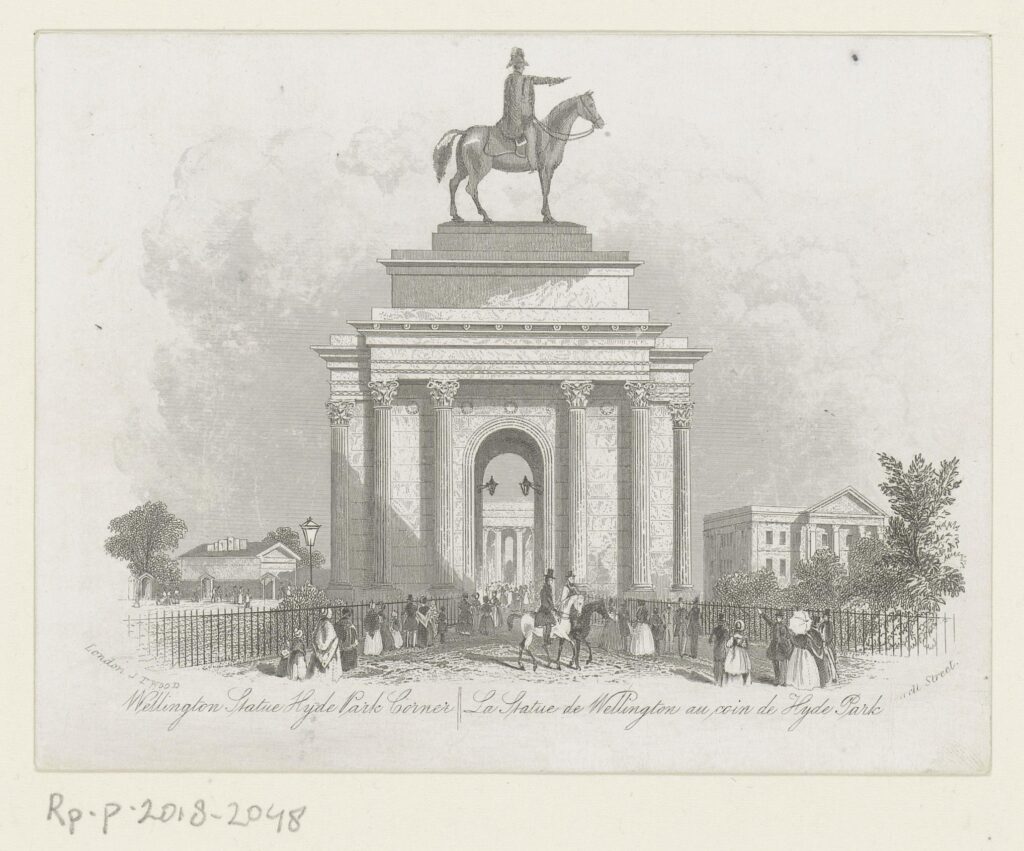
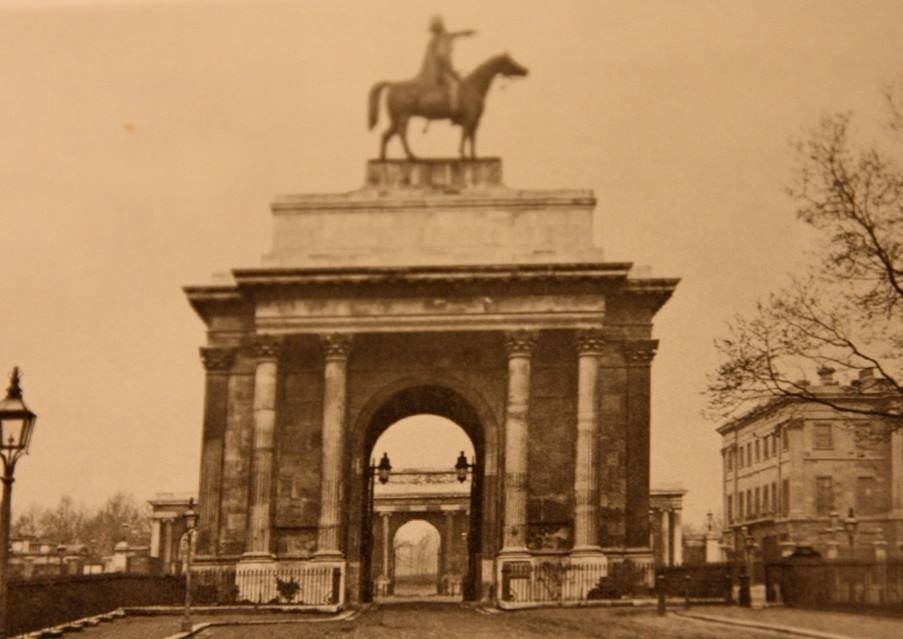
In 1846, some 20 years after it was built, a huge equestrian statue of the Duke of Wellington by Matthew Coates Wyatt was placed on top of the arch. This was, at 28’ (8.5m) high and 40 tonnes in weight, the largest equestrian figure ever made, and was massively out of proportion to the arch itself. Despite Burton’s vehement objection – and the objections of local residents, the architectural press and just about everyone else – the statue remained in place until the arch itself was relocated in 1883. As is frequently the case in London, this was necessitated by a change in the road layout at Hyde Park Corner and meant that the arch was moved a short distance and reoriented; instead of facing the park it now aligns with Constitution Hill. (The huge statue of Wellington was despatched to Round Hill in Aldershot, where it still stands.)
Another 20 years or so pass until the Edwardian remodelling of the whole of the area around Buckingham Palace was initiated (this is what gave us the Victoria Memorial and its various ‘gates’, the Mall and the imperial frontage to the Palace) and the artist Adrian Jones is commissioned to finally sculpt the quadriga that Burton had originally envisaged as topping his work.
The giant figures were cast in bronze in 1910/11 and erected on the specially strengthened roof of the arch in 1912. At 12m high and 13m across, it was the UK’s largest public sculpture until Antony Gormley’s ‘Angel of the North’, and represents Peace on her four horse chariot. (Ironic, given that just two years later Europe was to be convulsed by conflict and the space around the arch has memorials to the dead of that and subsequent wars.)
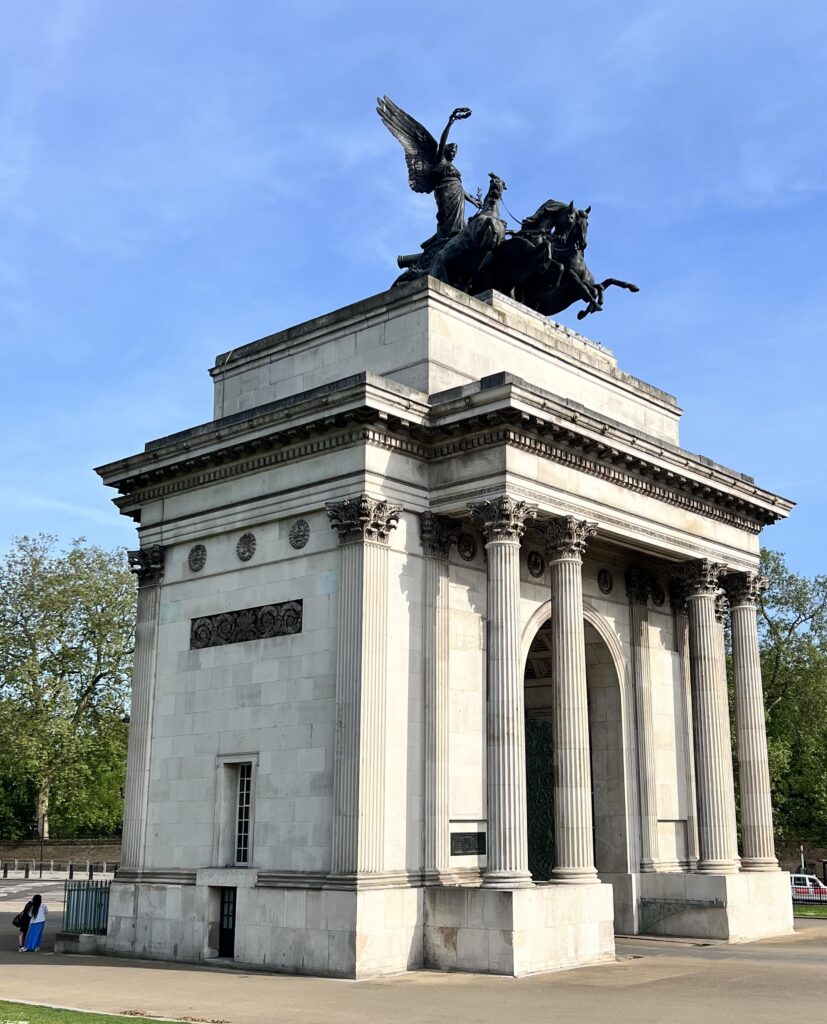
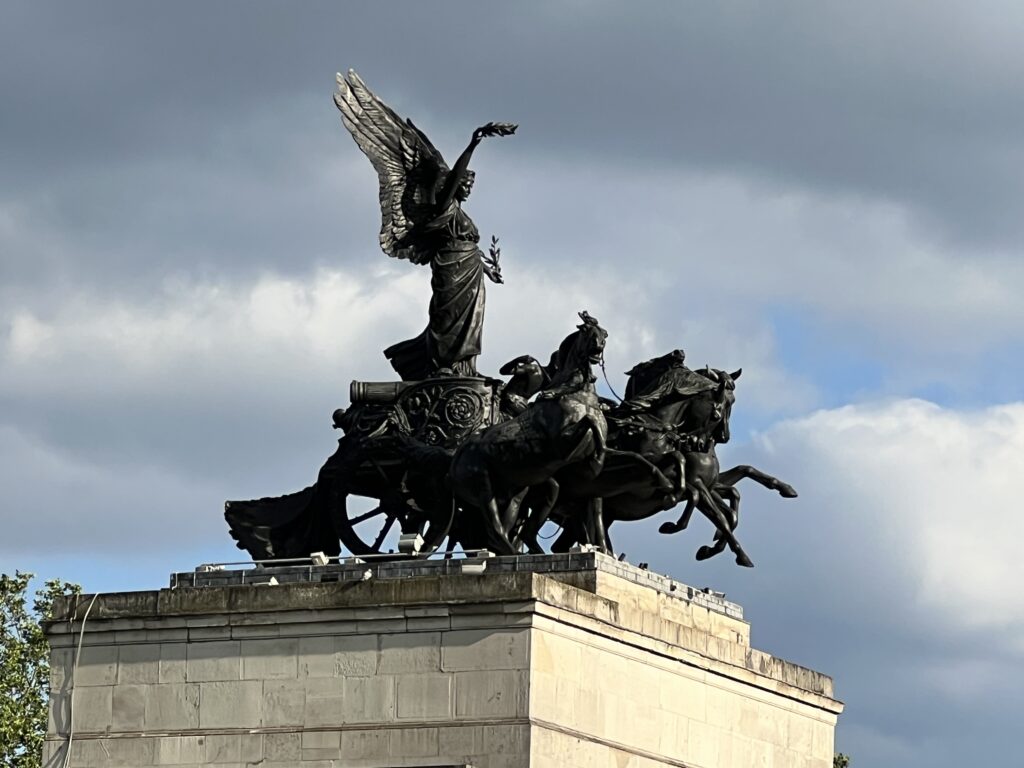
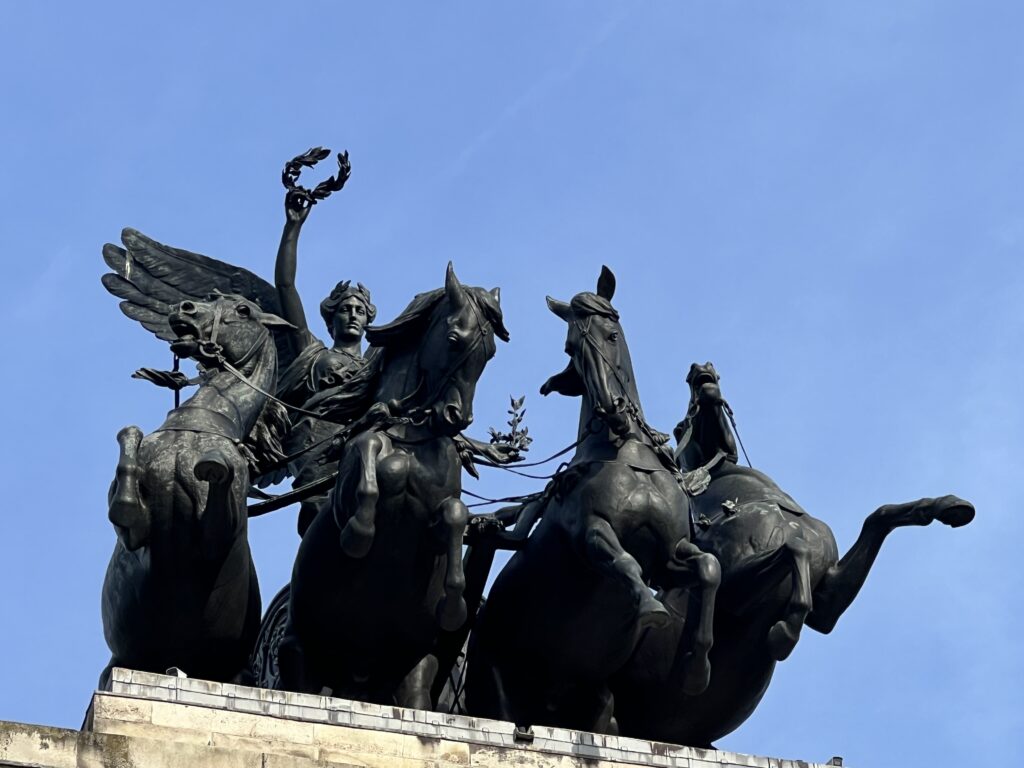
When Hyde Park Corner was turned into a giant roundabout in the 1960s the Arch was marooned on the traffic island, but English Heritage took over the responsibility for the structure in 1999 and restored/conserved it. In 1995 the pedestrian subways that lead to the space were decorated with illustrations about Wellington, Hyde Park and about the arch.
It is visitable – to my shame I’ve never been up it, despite the ‘unrivalled views’, so I shall add that to my list – and each morning one can stand and watch the Household Cavalry ride through it to/from the Knightsbridge Barracks to Horseguards Parade.
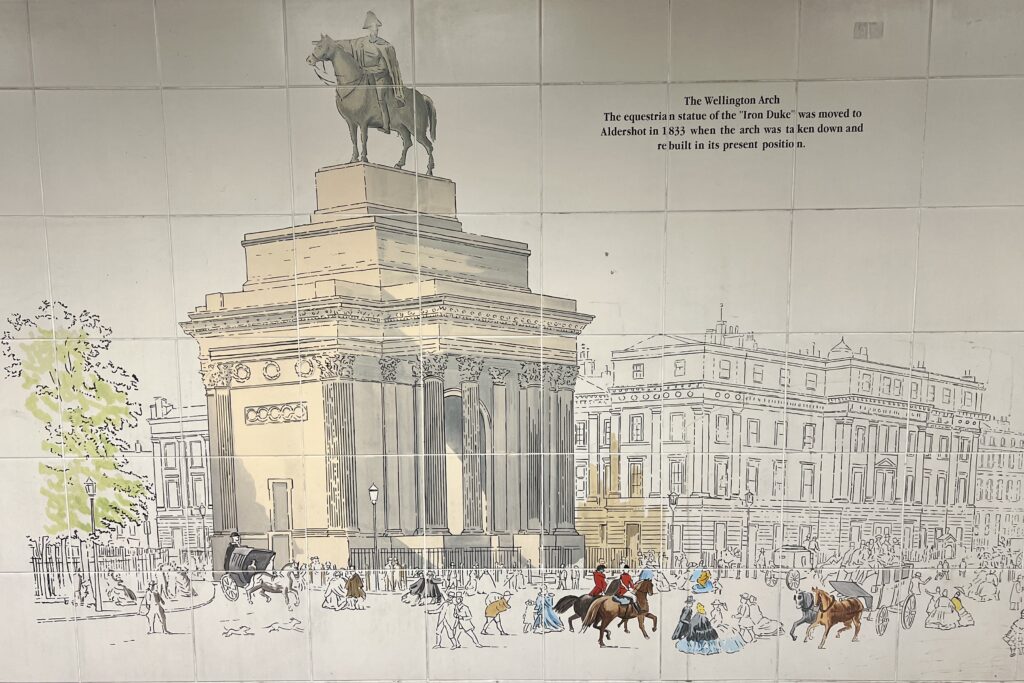
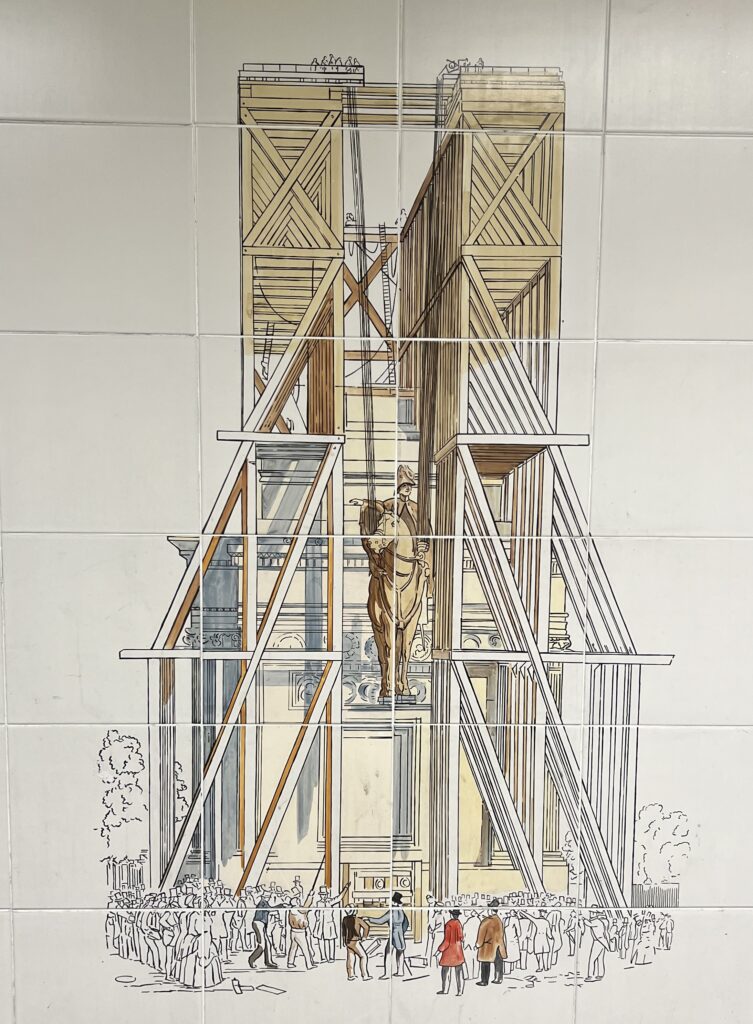
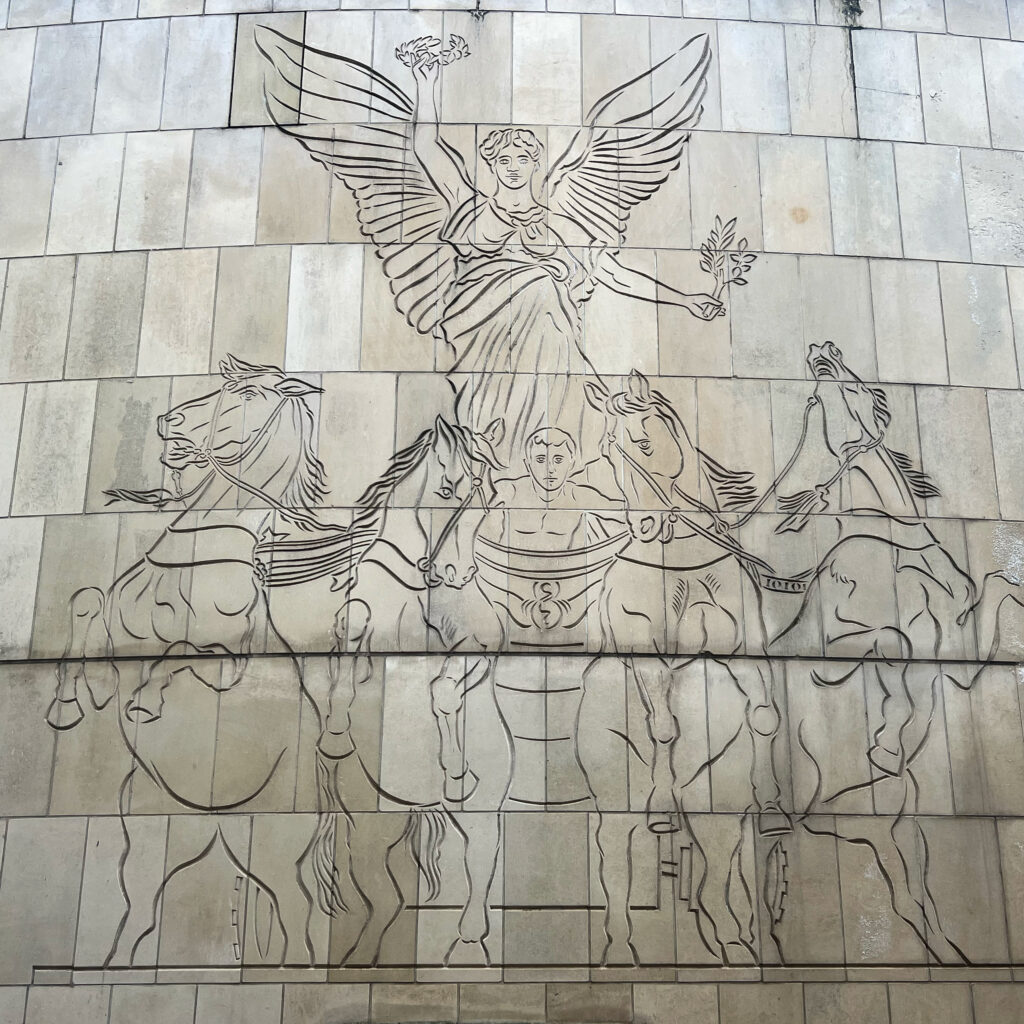


What a blast from the past – I used to work in Curzon Street in 1966 /67. Every weekday morning I would energe from Hyde Park underground station and see this (I thought the statue was of Boudicca) and one beautiful sunny summer morning I heard and then saw the Horseguards come jingling along. Thanks for bringing back the memories.